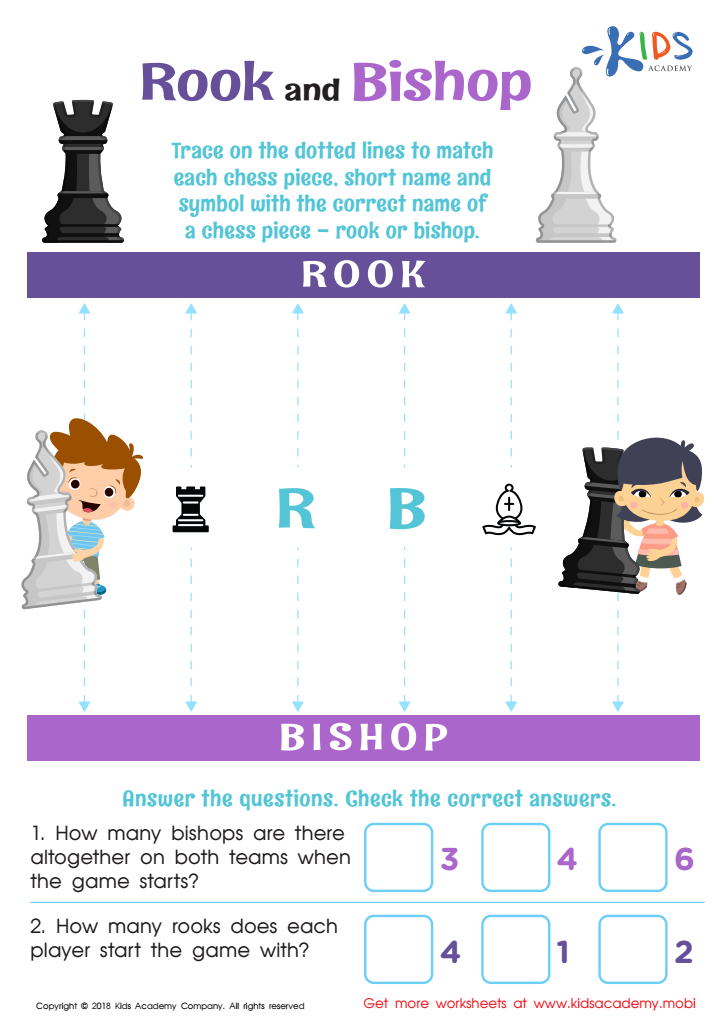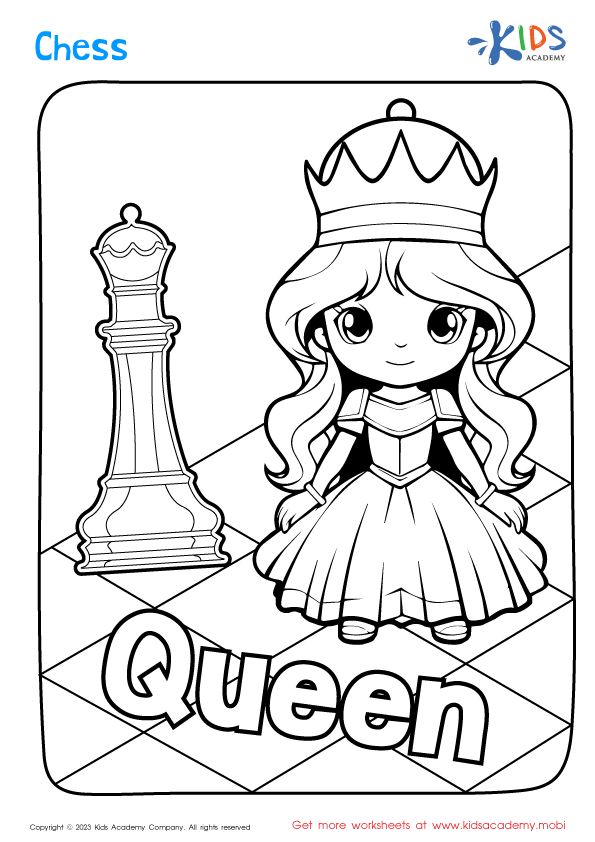Chess piece identification Worksheets for Kids
3 filtered results
-
From - To


Chess Pieces Quest Worksheet


Rook and Bishop Worksheet
Question/Answer
What are some effective activities to train students’ Chess piece identification skill when teaching them about Chess?
To train students in chess piece identification, use flashcards with images of the pieces, play matching games where students pair pieces with their names or roles, and conduct timed challenges where students name as many pieces as possible within a timeframe. Incorporating storytelling that personifies each piece can also enhance memorization by linking characteristics to their movements and roles.
How to test a Grade 1 student’s Chess piece identification skills?
To test a Grade 1 student's Chess piece identification skills, present each Chess piece to the student one at a time and ask the student to name the piece. You can use actual Chess pieces or clear pictures. For a comprehensive assessment, ensure to include all six types: King, Queen, Rook, Bishop, Knight, and Pawn.
How does the mastery of the Chess piece identification skill affect a student's performance at an early age?
Mastering Chess piece identification at an early age boosts a student's performance by enhancing cognitive skills such as memory, problem-solving, and strategic thinking. It also improves focus and discipline, essential traits for academic success. Early exposure to Chess sets a strong foundation for critical thinking, potentially leading to better performance in STEM fields and other areas requiring analytical skills.
 Assign to the classroom
Assign to the classroom













